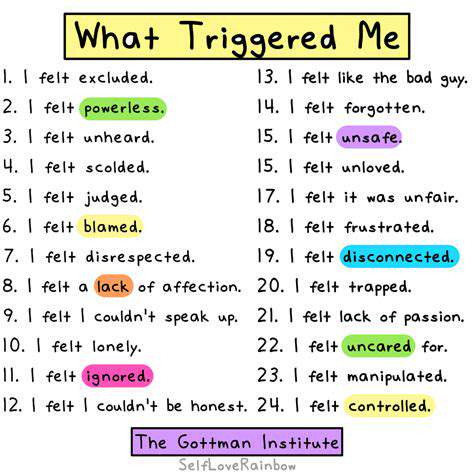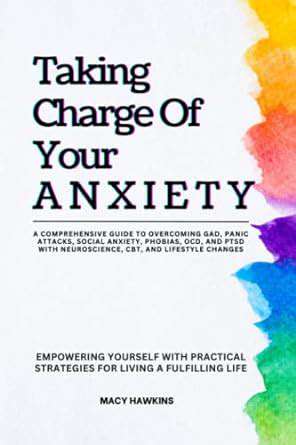Understanding Panic Anxiety: Causes and Management Techniques

Understanding the Root Cause
Identifying the triggers behind panic and anxiety is like solving a puzzle where each piece represents a different aspect of your life. The key to lasting relief lies in uncovering these hidden connections rather than just treating surface symptoms. Many people find that their anxiety stems from unresolved past experiences that continue to influence present reactions.
To truly understand your anxiety, consider keeping a detailed journal that tracks not just your panic attacks, but also your sleep patterns, dietary habits, and social interactions. This holistic approach often reveals surprising connections between seemingly unrelated factors.
Recognizing External Factors
Our environment constantly sends signals to our nervous system, many of which can trigger anxiety without conscious awareness. Common environmental triggers include fluorescent lighting, crowded spaces, or even specific sounds like alarms or loud voices. These stimuli can activate the body's fight-or-flight response before the conscious mind has time to process them.
Interestingly, many people report that their anxiety levels fluctuate with seasonal changes, suggesting that factors like sunlight exposure and temperature play significant roles in emotional regulation.
Analyzing Internal Motivations
The stories we tell ourselves about our capabilities and worthiness can become self-fulfilling prophecies when it comes to anxiety. Negative self-talk often creates an internal environment ripe for panic attacks, while compassionate self-reflection can build resilience. Many cognitive behavioral therapists emphasize the importance of identifying and challenging these automatic negative thoughts.
Physical health factors like gut microbiome balance, hormone levels, and neurotransmitter function also play crucial roles in anxiety that many conventional approaches overlook. An integrative approach often yields the best results.
Considering the Contextual Environment
Anxiety rarely occurs in a vacuum - it's usually the product of multiple converging factors. By mapping your anxiety episodes against your daily routines, you might discover patterns related to specific times of day, locations, or social configurations. Many people find their anxiety peaks during transitional periods like Monday mornings or Sunday evenings.
The digital environment deserves special attention, as constant notifications and social media comparisons can create chronic low-level stress that primes the nervous system for panic attacks. Implementing regular digital detoxes can significantly reduce anxiety symptoms for many individuals.
The Power of Support: Seeking Help and Building a Strong Network
Finding Your Support System
Building an effective support network requires more than just having people around you. The most helpful supporters are those who can sit with your discomfort without rushing to fix it, creating space for genuine healing. Surprisingly, sometimes the most meaningful support comes from unexpected sources - a neighbor, a coworker, or even an online community of people sharing similar struggles.
When cultivating your support system, consider diversifying your sources of support just as you would diversify an investment portfolio. Different people can meet different needs - some offer practical help, others provide emotional comfort, while some serve as accountability partners for your recovery journey.
The Importance of Professional Help
While friends and family provide essential emotional support, mental health professionals offer specialized tools for anxiety management. Modern therapy approaches now incorporate everything from traditional talk therapy to cutting-edge neurofeedback techniques, allowing for highly personalized treatment plans. Many therapists now offer hybrid models combining in-person and virtual sessions for greater accessibility.
Emerging research shows that combining therapy with adjunctive approaches like yoga, acupuncture, or nutritional counseling often yields better outcomes than any single approach alone. This integrative model addresses anxiety on multiple levels simultaneously.
Building a Strong Support Network
Creating a robust support system is an active process that requires regular maintenance and boundary-setting. Quality matters more than quantity when it comes to supportive relationships - even one or two truly understanding people can make all the difference. Many people find that joining anxiety support groups, whether in-person or virtual, helps reduce feelings of isolation and provides practical coping strategies.
Interestingly, helping others with similar struggles can paradoxically strengthen your own recovery. The act of sharing hard-won wisdom often reinforces those lessons in your own life while creating meaningful connections.
Strategies for Effective Support Seeking
Communicating your needs clearly is an acquired skill that many anxiety sufferers struggle with. Using I statements (e.g., I feel overwhelmed when... rather than You make me feel...) can help prevent defensiveness while ensuring your needs are heard. It's also helpful to identify specific ways people can support you, whether it's accompanying you to appointments or simply checking in via text.
Technology can be a double-edged sword for anxiety support. While apps and online communities provide 24/7 access to resources, setting boundaries around their use prevents digital overload. Many find that scheduling specific support times helps maintain balance.
Living a Fulfilling Life with Panic Anxiety: Long-Term Strategies

Finding Purpose Through Challenges
Many individuals discover that their journey with anxiety ultimately leads to unexpected personal growth. Developing resilience against panic attacks often translates to increased emotional intelligence and self-awareness in other life areas. Some people channel their experiences into creative outlets, advocacy work, or helping professions where their hard-won wisdom benefits others.
The concept of post-traumatic growth suggests that navigating mental health challenges can actually enhance certain aspects of life, from deepening relationships to clarifying personal values. This perspective doesn't minimize the struggle, but recognizes potential silver linings.
The Role of Lifestyle Factors
Simple daily habits often have profound impacts on anxiety management. Regular physical activity, even gentle movement like walking or yoga, helps regulate the nervous system and reduce overall tension. Sleep hygiene is equally crucial, as poor sleep both exacerbates and is exacerbated by anxiety, creating a vicious cycle.
Nutrition plays a surprisingly significant role in anxiety management. Emerging research highlights connections between gut health and mental health, suggesting that dietary changes can complement traditional treatments. Many find that reducing processed foods and increasing omega-3s makes noticeable differences.
Traditional and Alternative Approaches
Ancient healing traditions from various cultures offer valuable perspectives on anxiety management. Practices like meditation, breathwork, and herbal remedies have stood the test of time because they address fundamental aspects of human physiology. Modern science is now validating many of these approaches, showing how they can rebalance stress response systems.
Acupuncture, for instance, has shown promise in clinical studies for anxiety reduction, likely by influencing the body's neurochemical balance. Similarly, adaptogenic herbs like ashwagandha help modulate stress responses without the side effects of pharmaceuticals.
Sustainable Mental Health Practices
Effective long-term anxiety management requires approaches that fit seamlessly into daily life. Micro-practices - brief mindfulness exercises, minute-long breathing techniques, or quick grounding exercises - often prove more sustainable than lengthy routines. The key is consistency rather than duration.
Environmental design can support anxiety management effortlessly. Creating calming spaces at home or work, using soothing colors and textures, and minimizing clutter all contribute to an underlying sense of stability that buffers against stress.
Creative Expression as Therapy
Artistic outlets provide powerful channels for processing anxiety. The act of creating - whether through writing, painting, music, or other forms - engages different brain regions than verbal processing alone, often accessing deeper emotional layers. Many find that creative expression helps articulate feelings that resist straightforward description.
Journaling in particular has shown remarkable benefits for anxiety management. The practice of stream-of-consciousness writing can help identify thought patterns and emotional triggers while providing a safe outlet for difficult feelings.
The Power of Small Rituals
Intentional daily rituals create anchors of stability amidst anxiety's unpredictability. Simple practices like morning tea ceremonies, evening gratitude reflections, or midday breathing breaks provide regular reset points for the nervous system. These rituals needn't be elaborate - their power lies in their consistency and mindful execution.
Many anxiety sufferers find that incorporating nature connection into daily rituals amplifies benefits. Even brief exposure to natural environments has measurable calming effects, reducing cortisol levels and promoting relaxation.
Community and Shared Experience
Finding others who understand the anxiety journey reduces isolation and provides practical wisdom. Support groups, whether in-person or online, offer validation and concrete strategies while demonstrating that recovery is possible. Many people discover that helping newer members of the community reinforces their own progress.
Peer support specialists - individuals who've navigated their own mental health challenges and received training to help others - are increasingly recognized as valuable complements to professional care. Their lived experience provides unique insights and hope.